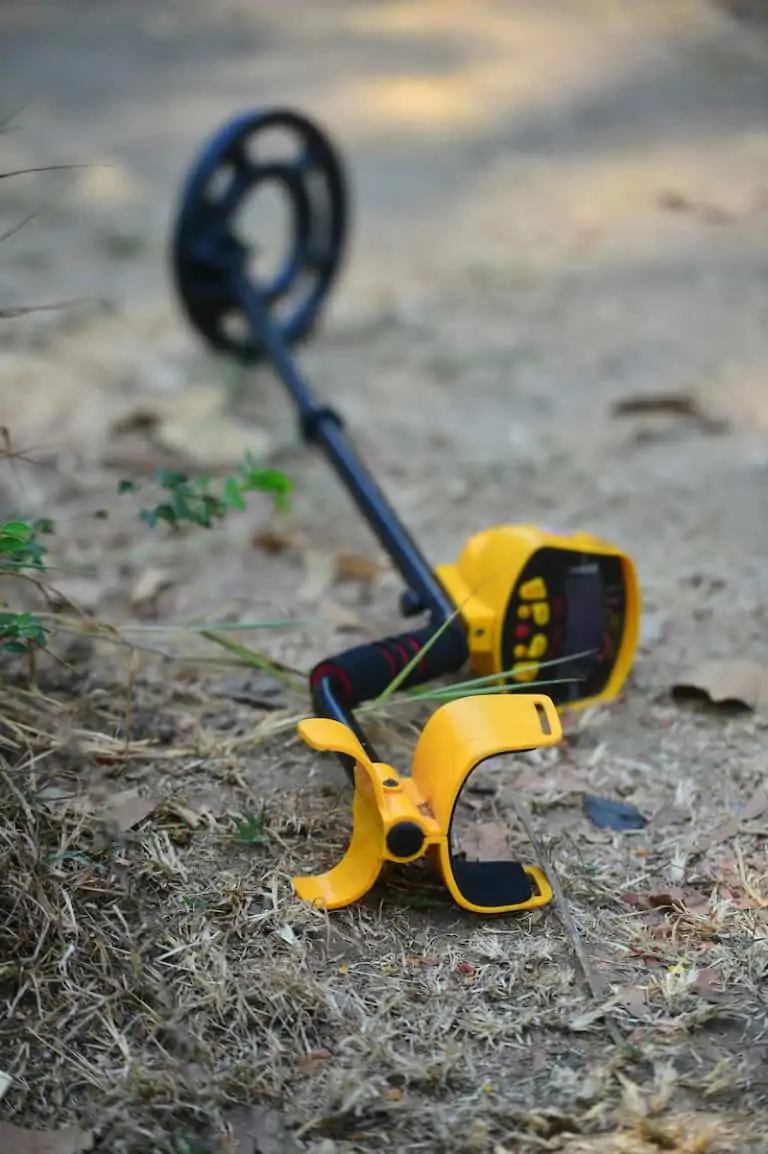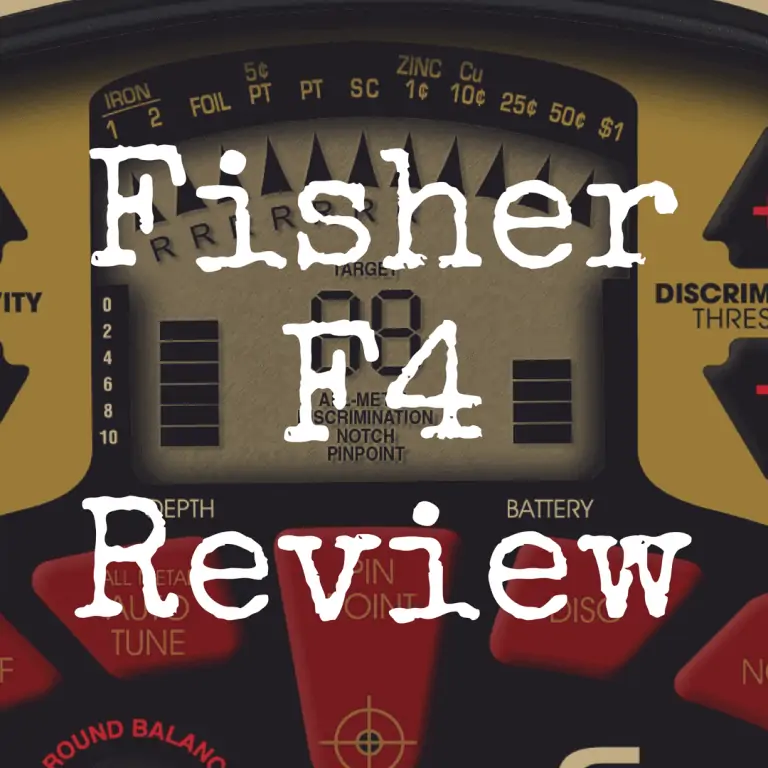Fisher Gold Bug 2 review
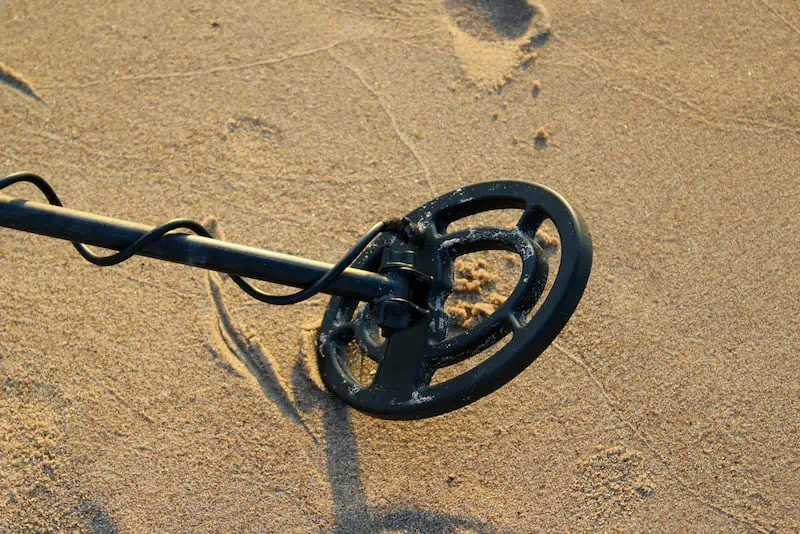
In this article, I’m going to review the Fisher Gold Bug 2 to help you best determine not only what this detector offers you in terms of quality and features, but also help you figure out if it’s worth your hard earned money.
Please take a moment to view the guide below, which allows you to compare the Fisher Gold Bug 2 to other notable metal detectors on the market.
| Photo | Model | Price | Features |
|---|---|---|---|
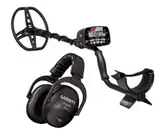 | Garrett AT Max | $$$ | Waterproof to 10 feet |
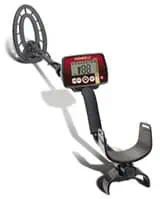 | Fisher F22 | $$ | 9″ Triangulated Concentric Coil |
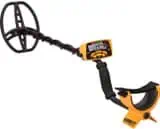 | Garrett Ace 400 | $$$ | 8.5 x 11" DD coil |
 | Minelab Vanquish 540 | $ | Search Modes: Coin, Relic, Jewelry, Custom, All Metal |
Brief History of Fisher
Fisher Labs was founded in 1931 by Dr. Gerhard R. Fisher. Fisher was a German immigrant who studied electronics at the University of Dresden. He was also a research engineer in Los Angeles in the 1920s where he received a patent for aircraft radio direction finders. Dr. Albert Einstein was familiar with Fisher’s work and stated that his technology would lead to worldwide use of radio direction finders.
The first metal detector was called the metallascope, or M-Scope. This device was nothing like the metal detectors we have today. It featured 2 wooden boxes with copper coils, vacuum tubes, and other components. Increased demand for the M-Scope grew. Fisher received a patent for his metal detector and was the first to do so.
The M-Scope was used by geologists for locating ore, treasure hunters for finding all types of treasures, utility companies to find buried pipes, lumber mills to detect metal inclusions in sawn logs, and law enforcement agencies to uncover abandoned and hidden weapons. Fisher Labs was called upon during World War II and the Korean War to contribute its technical competencies to the war effort.
Fisher’s patent rights were set to expire, and many competitors were waiting in the wings to produce metal detecting equipment. Fisher retired in 1967 and Fisher labs continued to expand. In 2006, Fisher Labs was purchased by First Texas Holdings Corporation. They moved Fisher Labs from California to Texas where the company carries on the Fisher legacy of creating state of the art metal detectors with the latest technologies.
Meet Fisher’s Gold Bug 2
The Gold Bug 2 was first released in 1995 and is still going strong over 20 years later. What sets this gold prospecting metal detector apart from all others is the operating frequency: a whopping 71 kHz. This is one of the highest operating frequency I have seen on a VLF (very low frequency) metal detector. This means it is exceptionally sensitive to small gold and fine gold jewelry. When used with the 6” elliptical search coil, the Gold Bug 2 has no problem finding gold weighing less than 1/10th of a grain. There are 480 grains in an ounce so that is less than 4800th of an ounce!
The Gold Bug 2 works extremely well in difficult ground conditions. Where gold is found you will typically find difficult soil conditions and the Gold Bug 2 has great discrimination settings. It filters out ferrous trash easily and has no difficulty filtering out interference from hot rocks, black sands, and minerals. There are 3 search coil options for the Gold Bug 2: a 6.5” elliptical search coil, a 10” elliptical search coil, and a 14” elliptical search coil.
The control box can be removed, and hip mounted to make the detector lighter. With the hip mount option, the stem and coil weigh just 1.9 pounds. With the control box the detector only weighs 2.9 pounds, so even with the control box mounted on the stem, it is easy to pack around without a lot of arm fatigue. The control box is dust and moisture resistance and the electronic components are quartz crystal locked. The Gold Bug 2 does not have an LCD screen like many VLF detectors. Instead, the machine is controlled by a series of knobs.
There are 3 search modes on the Gold Bug 2: Iron Discrimination, Normal mode for all metal operation, and Audio Boost for hearing faint, deep targets. The sensitivity knob controls target sensitivity, electrical interference, and ground mineralization. Ground Reject is a dual knob control used to electronically tune the electronic components to ignore ground minerals. The volume knob allows volume control and the Gold Bug 2 can be used with ¼” headphones.
Mineralization settings include high mineral, normal mineral, and low mineral. The Gold Bug 2 uses 2 drop-in 9-volt batteries. Fisher offers a 5-year warranty on the Gold Bug 2.
Fisher Gold Bug 2 Accessories
One optional accessory is a chest harness. The chest harness reduces arm weight and offers more freedom of movement by positioning the control box on the chest. This can help you hunt longer without arm fatigue. The chest harness is made of heavy-duty nylon and adjustable to fit most detectorists. Coil covers for each size of search coil can be purchased to keep the search coil from receiving damage while detecting
Fisher also makes headphones that work with the Gold Bug 2. There are standard stereo headphones or deluxe stereo headphones. The standard stereo headphones are lightweight and ergonomically adjustable. The feature genuine stereo sound with adjustable volume and adapters to fit almost all Fisher metal detectors.
Headphones also amplify faint signals and can help users find deeper treasure. The deluxe stereo headphones feature clear, high-quality sound making is simple to hear variable audio signals. These headphones are made of aluminum and an acoustic ear cup with foam pads to minimize noise interference.
Depending on where the Gold Bug 2 is purchased, additional accessories often come with the metal detector. For instance, one distributor offers a pick, holster, green scoop, 2” loupe, T2 scale, and large finds pouch with purchase of the Gold Bug 2. Another offers gloves with purchase. Each distributor will offer different items with purchase, while others offer just the metal detector itself.
Fisher Lab’s website offers Fisher headphones, stereo headphones, accessory coils, and coil covers, a padded carry bag, a finds apron, a metal sand scoop, and a Lesche knife. Users can also pair their Gold Bug 2 metal detector with the Fisher F-Pulse Pinpointer. The F-Pulse Pinpointer directs users to the exact location of metallic objects buried in soil, sand, or dirt.
This pinpointer is fully waterproof up to 6 feet and works well in freshwater or saltwater. This pinpointer is a pulse induction pointer with beep and vibrate alert, single button operation, 3 adjustable sensitivity levels, proportional audio response, retune, adjustable LED light, automatic shutdown, and belt holster. The F-Pulse uses 2 AA-batteries and comes with a 2-year warranty. This is a heavy duty pinpointer constructed from abrasion-resistant materials and will not wear out like other pinpointers.
Fisher Gold Bug 2 Coils
As mentioned above, there are 3 coil options for the Gold Bug 2: a 6.5” elliptical, 10” elliptical, and 14” elliptical. All are concentric coils. The search coils can find gold up to the following depths:
- 6.5” coil – 0.5 grain nugget at 1.5”, 1-ounce nugget at 8”
- 10” coil – 0.5 grain nugget at .25”, 1-ounce nugget at 11”
- 14” coil – 0.5 grain nugget only right on the coil, 1-ounce nugget at 14”
Fisher Gold Bug 2 vs Gold Bug Pro
The Fisher Gold Bug Pro is the final release in the Gold Bug series of digital metal detectors. The Gold Bug Pro coms with a 5” round Double-D search coil or an 11” elliptical Double-D search coil. It also has an option for a dual coil package that includes both the 5” round Double-D search coil and a 10” Double-D search coil. Detech also makes a 13” coil that works on the Gold Bug Pro.
The Gold Bug Pro features adjustable Gain, adjustable Threshold, and computer assisted Ground Grab and Ground Balance. This is extremely helpful in areas where ground mineralization is high. Gold bearing areas are typically high in ground mineralization, hot rocks, and/or black sands. The Gold Bug Pro is great at filtering out interference from these natural sources.
The Gold Bug Pro operates a lower frequency than the Gold Bug 2, at 19 kHz. The user interface is simple. The Gold Bug Pro has several upgraded technologies that set it apart from the original Gold Bug metal detectors including:
- Ground Grab computerized ground balancing
- VCO audio in all metal and discrimination modes
- Continuous ground condition readout
- Fe3O4 graphic showing the amount of ground mineralization
- Ground phase showing the type of mineralization
- Static pinpoint mode
- V-Break variable breakpoint tone discrimination system
The Gold Bug Pro is ultra-lightweight at just 2.5 pounds and it features dual headphone jacks. Fisher offers a 5-year warranty on the Gold Bug Pro.
Fisher Gold Bug 2 vs Garrett ATX
Garrett’s ATX is one of my favorite metal detectors. It is much more expensive than the other detectors on this list, but there are several reasons for this. The ATX operates on pulse induction, rather than VLF technology. PI technology is fantastic in highly mineralized soil conditions and saltwater areas. It is inherently immune to the effects of saltwater, so this is the perfect beach detector. It is also fully waterproof up to 10 feet. The ATX has excellent sensitivity and is perfect for finding small, low conductivity items like sub-gram gold nuggets and fine gold jewelry.
The ATX features 25 discrimination settings and 13 sensitivity settings. It has 2 types of ground balancing: Fast Track and Continuous. The Continuous Ground Track has 4 settings offering a wide range of ground balancing options to compensate for interference from high mineralization in soils or saltwater. The ATX features 2 search modes: Discriminate and All Metal. It has 2 detection modes: non-motion and motion. Most PI metal detectors can still send and receive a signal while not in motion. VLF metal detectors typically need to be in motion to detect a target.
The ATX does not have an LCD screen as most VLF detectors do. This is common with gold prospecting metal detectors. As with the Gold Bug 2, the ATX is controlled by knobs. It emits 730 pulses per second, which is adjustable. It uses 8 AA batteries and is heavier than the other metal detectors, at 6.9 pounds. The ATX is not designed for use by beginning detectorists. It is best suited to more intermediate or advanced metal detectorists.
Garrett offers a 2-year warranty on the ATX.
Fisher Gold Bug 2 vs Garrett AT Gold
Garrett’s AT Gold is designed for beginning or intermediate prospectors. The AT Gold is a variant of the Garrett AT line, but is modified to be best suited for gold prospecting. This detector operates at 18 kHz, which is far lower than the Gold Bug 2. The AT Gold is fully waterproof up to 10 feet. It operates best in freshwater areas and has some difficulty in saltwater areas or transitions between wet and dry sand.
The AT Gold has an easy to read LCD screen with digital target ID. It has a graphic target analysis that shows the conductivity range of detected targets. The AT Gold has a high resolution of iron discrimination and features Iron Audio to give specific signals for ferrous targets.
The AT Gold features automatic and manual ground balancing. It features Fast Track ground balancing which automatically ground balances to the soil conditions and is helpful in highly mineralized areas. The Ground Balance Window prevents the detector from emitting false readouts caused by soil changes. This detector has 3 search modes: All Metal, Discriminate, and Customizable Notch.
All Metal mode gives the highest level of sensitivity. Discrimination Mode filters signals from iron targets. Customizable Notch lets users notch out or in specific target types. Discrimination Mode is set to filter out pull tabs and light foil. It is set with a coin pattern to alert on all common coins, despite discrimination. Iron rejection levels can be saved after they are set, but the rest of the patterns are preset and no adjustable.
The AT Gold is lightweight at just 2.8 pounds. It operates on 8 AA batteries and has an adjustable shaft to suit all sizes of detectorists. It comes standard with an 8” Double-D search coil with 8 depth and sensitivity adjustments. The AT Gold features 44 iron discrimination segments. The detector can be used with standard headphones.
Garrett offers a 2-year warranty on the AT Gold.
Fisher Gold Bug 2 vs Minelab Gold Monster 1000
Minelab’s Gold Monster 1000 is a VLF metal detector designed to find gold dust, flakes, and nuggets. The Gold Monster 1000 is very user friendly and has a nearly fully automatic operation. Users need only to adjust the volume and sensitivity. This makes the Gold Monster 1000 a good choice for beginning detectorists, but it is also suitable for more advanced detectorists who want to find gold without complicated settings. This model has a feature called Gold Chance Indication that shows how likely users are to find gold in an area.
This detector operates at 45 kHz, lower than the Gold Bug 2. This frequency is still higher than a lot of VLF detectors and is a good range for finding gold. Higher frequency metal detectors often sacrifice the elimination of ground mineralization for the possibility of finding more gold targets. Lower frequency metal detectors have better ground mineralization elimination but will have a more difficult time finding small gold.
The Gold Monster 1000 features a monochromatic LCD screen. It has automatic Easy-Trak Ground Balancing and automatic noise cancellation. The Gold Monster 1000 has 2 search modes, Gold and Deep All-Metal.
The Gold Monster 1000 has automatic tracking or continuous ground balancing. This ensures maximum efficiency between finding targets and eliminating ground mineralization interference. Sometimes, a metal detector that is not ground balanced properly can fall out of sync with the changes in ground condition. Continuous ground tracking keeps this from happening. The detector re-ground balances every so often to ensure efficient searching and good depth.
The Gold Monster 1000 comes standard with a 10” Double-D search coil and a 5” Double-D search coil. Both coils are waterproof, but the control box is only weatherproof. The detector should not be fully submerged in water or the control box will be damaged. It runs on 8 AA batteries and weight just 2.94 pounds. The Gold Monster 1000 has improved non-ferrous and ferrous discrimination and functions very well in highly mineralized soil conditions and salty soil conditions better than some other metal detectors.
Minelab offers a 2-year warranty on the Gold Monster 1000.
Cost Comparison
- Fisher Gold Bug 2 – $900
- Fisher Gold Bug Pro – $699
- Garrett ATX – $2,495
- Garrett AT Gold – $750
- Minelab Gold Monster 1000 – $849
All these metal detectors are similarly priced, except for the Garrett ATX. Pulse induction metal detectors often carry a higher price than VLF metal detectors.
Conclusion
Fisher has been manufacturing metal detectors for decades and continues to be a leading competitor in the metal detecting industry. They are known for their quality, customer service, and incorporating the latest technology in their metal detecting equipment. They manufacture metal detecting equipment for gold, treasure, security, utility, and industrial uses. With a track record like Fisher’s, you cannot go wrong with one of their products.
Each metal detector on this list a great detector for finding gold. The Gold Bug 2 is a fantastic option and has one of the highest operating frequencies on the market today. This higher frequency means the Gold Bug 2 will be able to find the smallest gold nuggets and flakes, but it may not eliminate ground mineralization as well as some of the other metal detectors. The Minelab Gold Monster 1000 has one of the best frequencies, at 45 kHz, which offers the best gold detection and ground mineralization elimination balance out of all the detectors on this list.
The Gold Bug 2 is designed from the ground up for the sole purpose of finding gold. It features low-noise, precision-matched, temperature-compensated components and state of the art circuitry taking prospecting to a whole new level. The Gold Bug 2 will have increased sensitivity to small, deep gold because of the higher frequency. Users can even hunt in areas that most detectors would fail in with its High Mineralization Mode. The Gold Bug 2 also has Audio Boost Mode so users can hear faint and deep signals more clearly.
The Gold Bug Pro is also a great choice for prospectors, but it operates at a lower frequency than the Gold Bug 2 or the Minelab Gold Monster 1000. It will likely not find small or fine gold as well as these other models with higher frequencies. Despite this, it is a great choice for beginning detectorists, or those who have never prospected for gold before. It features a simplistic user interface with just 2 knobs, a ground balancing button, and the large LCD screen.
Garrett’s ATX is the only PI metal detector on this list. It will likely outperform many, if not all, of the VLF metal detectors on this list simply because it is pulse induction. Pulse induction technology is inherently immune to the effects of saltwater and operates fantastically in areas with high soil mineralization. The main drawbacks of the ATX are the weight and the price. It is the heaviest and most expensive detector on this list. But you do get your money’s worth with the ATX. This model is tailored to more advanced detectorists and will not be user friendly for new detectorists.
The Gold Bug 2 is one of the best metal detectors for gold prospecting on the market today. There are a range of accessories users can purchase to complement their Gold Bug 2. This helps each user customize their detecting equipment to suit themselves. I would highly recommend pairing your Fisher Gold Bug 2 with Fisher’s F-Pulse Pinpointer.
This PI pinpointer is durable and reliable, and fully waterproof. It is always helpful to have a handheld metal detector with you, so you do not have to dig so much. You can narrow your search area down easily and quickly with this pointer and will save time and energy. You really cannot go wrong with this detector if you are in the market for a detector to find gold!
One final tip: remember to search for gold in areas where it has already been found. Not to say you cannot find gold in any location, but it is more likely you will find it where it has historically been found. There are numerous videos, articles, and historical texts detailing locations where gold was found. Do some research and make sure you are in a gold producing location. Just because you buy a gold hunting metal detector does not guarantee you will find gold if you are looking in the wrong places!
If you’ve enjoyed this article, please “like” our new Discover Detecting Facebook page.
You Also Might Like:



